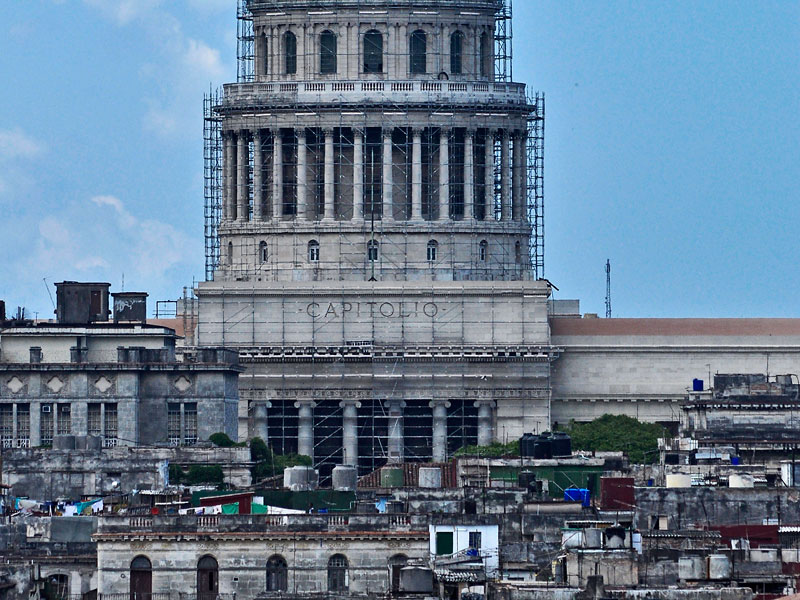Remarkable symbol of the city of Havana and one of the great buildings of Cuba. Of great architectural wealth, sumptuously ornate, of pure lines and beautiful proportions. Throughout the construction of the building materials of excellent quality were used, such as: Italian marbles, details in walls, ceilings, doors and lamps, most of them were melted in France. The Capitol is inspired by the Capitol of the United States being admired by both natives and foreigners. It was declared a National Monument by Resolution 04 of November 15, 2010. At present, this majestic work is undergoing a major restoration by the Office of the Historian of the City of Havana.
It is located in the center of the capital of the country, between Prado, Dragones, Industria and San José, it is the kilometer origin of the Cuban road network, and after the triumph of the Revolution, when the Congress was dissolved, it was transformed At the headquarters of the Ministry of Science, Technology and Environment and the Academy of Sciences of Cuba. Considered the most imposing building in the city, it is named by some experts as one of the six most important palaces in the world.
Its history begins when the lands that today occupy, were part of a swamp, that dredged at the beginning of century XIX for its urban use. Then it was a garbage dump to give way later to the Botanical Garden. This last one was transferred in 1834 for the present Quinta de los Molinos to begin the construction of the Railway Station Villanueva, work of Claudio Martinez de Pinillos, Count of Villanueva, Intendant General of Haciendas and first president of the Directive Council of the Railroad.
Then, by 1910, the Cuban state acquired the land of the old station of Villanueva and it was initially proposed to build a presidential palace there. Construction work went from one government to another, with its ups and downs, until the inauguration on May 20, 1929.
Building characteristics
A wide granite staircase, with 55 steps, 36 meters wide and 16 meters high, leads to the portico of the building ... To both sides of the end of the stairs appear two impressive sculptural groups of bronze with pedestal of granite, Italian Angelo Zanelli, One male and the other female, have a height of 6.70 meters and represent the first the progress of human activity and the second the tutelary virtue of the people.
The elegance of the dome makes it recognize the building from various points of Havana, whose height reaches 91.73 meters. Crossing the central portico you will reach the roundabout under the dome. Once there, if you look at both ends you will see the two wings of the Hall of Lost Steps, eclectic style and arranged for large receptions. At its center is the brilliant 25-carat, directly under the central spire of the dome, setting the starting point for the entire road system of the country, and also as a dividing site between the House and the Senate. In its niche you can see the Statue of the Republic, with a weight of 30 tons and a total height of 14.60 meters, rests on a marble pedestal of 2.50 meters. It is the figure of a young woman standing, dressed in a robe, helmet, shield and spear sculpted by Angelo Zanelli, author of the sculpture of Abraham Lincoln in the mausoleum erected in his honor in Washington.












